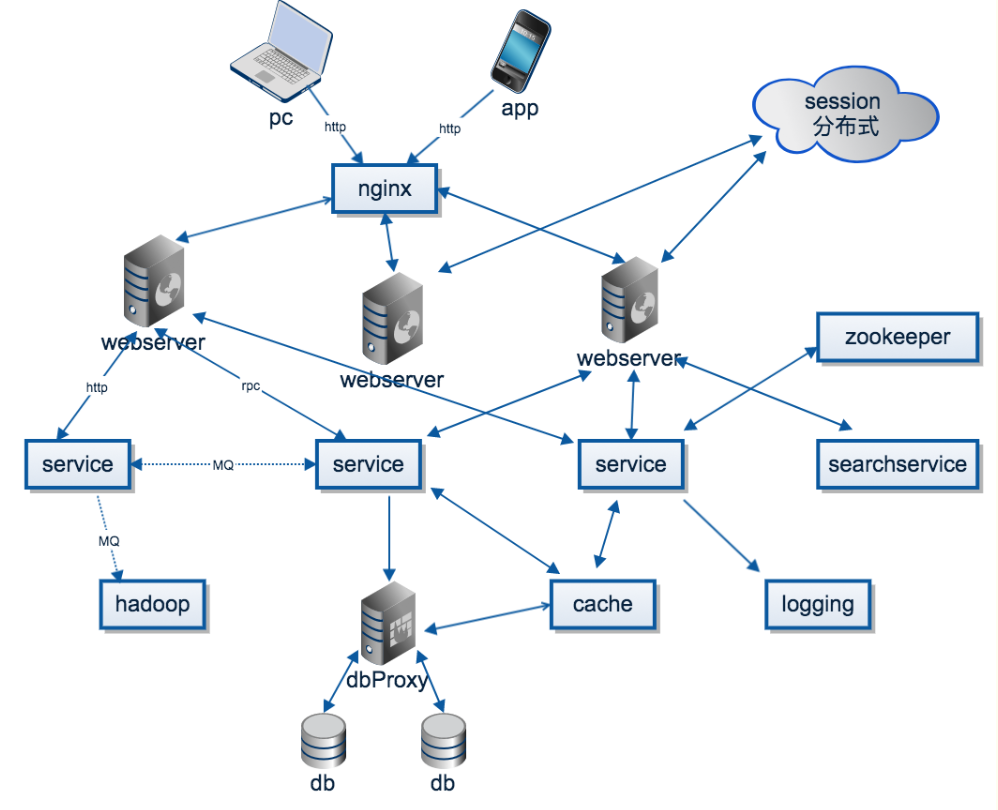Bean的初始化和生命周期
bean 的生命周期
bean 创建—>初始化—>销毁的过程
Spring 容器管理 bean 的生命周期
对象创建
单实例:容器启动时创建对象
多实例:获取对象时创建对象
初始化:
销毁:
- 单实例:容器关闭时销毁
- 多实例:容器不会管理该bean,不会调用销毁方法
自定义初始化和销毁方法
1.指定初始化和销毁方法
1
2
3
4
5
6
7
8
9
10
11
12
13
14
| public class Car {
public Car() {
System.out.println("容器创建完成!");
}
public void init() {
System.out.println("方法被创建了!");
}
public void destory() {
System.out.println("方法被销毁了!");
}
}
|
1
2
3
4
5
6
7
8
9
10
| @Configuration
public class MainConfig {
@Bean(initMethod = "init",destroyMethod = "destroy")
public Car car() {
return new Car();
}
}
|
2.让Bean实现 InitializingBean接口 和 DisposableBean接口
1
2
3
4
5
6
7
8
9
10
11
12
13
14
15
| public class Car implements InitializingBean, DisposableBean {
public Car() {
}
@Override
public void destroy() throws Exception {
System.out.println("销毁方法~");
}
@Override
public void afterPropertiesSet() throws Exception {
System.out.println("初始化方法~");
}
}
|
3.可以用 JSR250:
@PostConstruct:在bean创建完成并属性复制完成,执行初始化方法

PreDestroy:在容器销毁bean之前通知我们进行销毁工作

1
2
3
4
5
6
7
8
9
| @PostConstruct
public void init() {
System.out.println("@PostConstruct");
}
@PreDestroy
public void destroy() {
System.out.println("@PreDestroy");
}
|
4.BeanPostProcessor
1
2
3
4
5
6
7
8
9
10
11
12
13
| public interface BeanPostProcessor {
@Nullable
default Object postProcessBeforeInitialization(Object bean, String beanName) throws BeansException {
return bean;
}
@Nullable
default Object postProcessAfterInitialization(Object bean, String beanName) throws BeansException {
return bean;
}
}
|
BeanPostProcessor 原理:
1
2
3
4
5
6
7
8
9
10
11
12
13
14
15
16
17
18
19
|
populateBean(beanName, mbd, instanceWrapper);
{
wrappedBean = this.applyBeanPostProcessorsBeforeInitialization(bean, beanName);
this.invokeInitMethods(beanName, wrappedBean, mbd);
wrappedBean = this.applyBeanPostProcessorsAfterInitialization(wrappedBean, beanName);
}
|
Spring底层对 BeanPostProcessor 的使用:
bean赋值、注入其他组件、@Autowired、生命周期注解功能、@Async、···
属性赋值:@Value
1
2
3
4
5
6
7
8
9
10
11
12
13
14
| public class Person {
@value("wxs")
private String name;
@value("#{20-2}")
private Integer age;
private String hobby;
}
|
1
2
3
4
5
6
7
8
9
| @Configuration
@PropertySource(value={"classpath:/person.properties"})
public class MainConfig {
public Person person() {
return new Person();
}
}
|
1
2
|
person.hobby = singJumpRapAndBasketball
|
环境切换:@Profile
@Profile 注解:逻辑组名称,只有当这些Profile被激活的时候,才会将Profile中所对应的Bean注册到Spring容器中。
- 加了环境标识的bean,只有环境被激活才会被注册到容器中
- 写在配置类上,只有是指定的环境的时候,整个配置类里面的所有配置才能开始生效
- 没有标注环境标识的bean,在任何环境下都加载
1
2
3
4
5
6
7
8
9
10
11
12
13
14
| @Profile("dev")
public DataSource dataSourceDev(){
...
}
@Profile("test")
public DataSource dataSourceTest(){
...
}
@Profile("prod")
public DataSource dataSourceProd(){
...
}
|
激活方法:
使用命令行动态参数: 设置虚拟机参数 -Dspring.profiles.active=test/dev/prod
-
1
2
3
4
5
6
7
8
9
10
11
|
AnnotationConfigApplicationContext context = new AnnotationConfigApplicationContext(MainConfig.class);
context.getEnvironment().setDefaultProfiles("test");
context.register(MainConfig.class);
context.refresh();
|
Spring容器创建原理【源码分析】
Spring 通过AnnotationConfigApplicationContext context = new AnnotationConfigApplicationContext(MainConfigOfAOP.class)来创建容器,
我们就进到 AnnotationConfigApplicationContext 中一探究竟!
==注:以下代码均只截取了源码中重要的部分,并不是完整的源码==

重点关注容器的刷新过程!
1
2
3
4
5
6
7
8
9
10
11
12
13
14
15
16
17
18
19
20
21
|
public void refresh() {
this.prepareRefresh();
ConfigurableListableBeanFactory beanFactory = this.obtainFreshBeanFactory();
this.prepareBeanFactory(beanFactory);
this.postProcessBeanFactory(beanFactory);
this.invokeBeanFactoryPostProcessors(beanFactory);
this.registerBeanPostProcessors(beanFactory);
this.initMessageSource();
this.initApplicationEventMulticaster();
this.onRefresh();
this.registerListeners();
this.finishBeanFactoryInitialization(beanFactory);
this.finishRefresh();
this.destroyBeans();
this.cancelRefresh(var9);
this.resetCommonCaches();
}
|
1. prepareRefresh():刷新前的预处理
1
2
3
4
5
6
7
8
9
10
11
12
13
14
| protected void prepareRefresh() {
this.startupDate = System.currentTimeMillis();
this.closed.set(false);
this.active.set(true);
this.initPropertySources();
this.getEnvironment().validateRequiredProperties();
this.earlyApplicationEvents = new LinkedHashSet();
}
|
2. obtainFreshBeanFactory():获取BeanFactory
1
2
3
4
5
6
7
8
9
10
| protected ConfigurableListableBeanFactory obtainFreshBeanFactory() {
this.refreshBeanFactory();
return this.getBeanFactory();
}
|
3. prepareBeanFactory(beanFactory):BeanFactory的预准备
1
2
3
4
5
6
7
8
9
10
11
12
13
14
15
16
17
18
19
20
21
22
23
24
25
26
27
28
29
30
31
32
33
34
35
36
| protected void prepareBeanFactory(ConfigurableListableBeanFactory beanFactory) {
beanFactory.setBeanClassLoader(this.getClassLoader());
beanFactory.setBeanExpressionResolver(new StandardBeanExpressionResolver(beanFactory.getBeanClassLoader()));
beanFactory.addPropertyEditorRegistrar(new ResourceEditorRegistrar(this, this.getEnvironment()));
beanFactory.addBeanPostProcessor(new ApplicationContextAwareProcessor(this));
beanFactory.ignoreDependencyInterface(EnvironmentAware.class);
beanFactory.ignoreDependencyInterface(EmbeddedValueResolverAware.class);
beanFactory.ignoreDependencyInterface(ResourceLoaderAware.class);
beanFactory.ignoreDependencyInterface(ApplicationEventPublisherAware.class);
beanFactory.ignoreDependencyInterface(MessageSourceAware.class);
beanFactory.ignoreDependencyInterface(ApplicationContextAware.class);
beanFactory.registerResolvableDependency(BeanFactory.class, beanFactory);
beanFactory.registerResolvableDependency(ResourceLoader.class, this);
beanFactory.registerResolvableDependency(ApplicationEventPublisher.class, this);
beanFactory.registerResolvableDependency(ApplicationContext.class, this);
beanFactory.addBeanPostProcessor(new ApplicationListenerDetector(this));
beanFactory.addBeanPostProcessor(new LoadTimeWeaverAwareProcessor(beanFactory));
beanFactory.setTempClassLoader
(new ContextTypeMatchClassLoader(beanFactory.getBeanClassLoader()));
beanFactory.registerSingleton("environment", this.getEnvironment());
beanFactory.registerSingleton
("systemProperties", this.getEnvironment().getSystemProperties());
beanFactory.registerSingleton
("systemEnvironment", this.getEnvironment().getSystemEnvironment());
}
|
4. postProcessBeanFactory(beanFactory):BeanFactory准备完成后进行的后置处理工作
1
2
3
|
protected void postProcessBeanFactory(ConfigurableListableBeanFactory beanFactory) {
}
|
5. invokeBeanFactoryPostProcessors(beanFactory):执行BeanFactoryPostProcessor
BeanFactoryPostProcessor:在 BeanFactory 标准初始化之后执行
1
2
3
4
5
6
7
8
9
10
11
12
13
14
15
16
17
18
19
20
21
22
23
24
25
26
27
28
29
30
31
32
33
| protected void invokeBeanFactoryPostProcessors(ConfigurableListableBeanFactory beanFactory) {
PostProcessorRegistrationDelegate.invokeBeanFactoryPostProcessors
(beanFactory, this.getBeanFactoryPostProcessors());
beanFactory.addBeanPostProcessor
(new LoadTimeWeaverAwareProcessor(beanFactory));
beanFactory.setTempClassLoader
(new ContextTypeMatchClassLoader(beanFactory.getBeanClassLoader()));
}
|
6. registerBeanPostProcessors(beanFactory):注册 Bean 的后置处理器
1
2
3
4
5
6
7
8
9
10
11
| protected void registerBeanPostProcessors(ConfigurableListableBeanFactory beanFactory) {
PostProcessorRegistrationDelegate.registerBeanPostProcessors(beanFactory, this);
}
|
7. initMessageSource():初始化MessageSource组件(国际化、消息绑定、消息解析)
1
2
3
4
5
6
7
8
9
10
11
12
13
14
15
16
17
18
| protected void initMessageSource() {
ConfigurableListableBeanFactory beanFactory = this.getBeanFactory();
if (beanFactory.containsLocalBean("messageSource")) {
this.messageSource =
(MessageSource)beanFactory.getBean("messageSource", MessageSource.class);
} else {
DelegatingMessageSource dms = new DelegatingMessageSource();
dms.setParentMessageSource(this.getInternalParentMessageSource());
this.messageSource = dms;
beanFactory.registerSingleton("messageSource", this.messageSource);
}
}
|
8. initApplicationEventMulticaster():初始化事件派发器
1
2
3
4
5
6
7
8
9
10
11
12
13
14
| protected void initApplicationEventMulticaster() {
ConfigurableListableBeanFactory beanFactory = this.getBeanFactory();
if (beanFactory.containsLocalBean("applicationEventMulticaster")) {
this.applicationEventMulticaster = (ApplicationEventMulticaster)beanFactory.getBean("applicationEventMulticaster", ApplicationEventMulticaster.class);
} else {
this.applicationEventMulticaster =
new SimpleApplicationEventMulticaster(beanFactory);
beanFactory.registerSingleton("applicationEventMulticaster", this.applicationEventMulticaster);
}
}
|
9. onRefresh():留给子容器
子类重写该方法,在容器刷新时可以自定义逻辑
10. registerListeners():将项目中的ApplicationListener注册进容器中
1
2
3
4
5
6
7
8
9
| protected void registerListeners() {
String[] listenerBeanNames =
this.getBeanNamesForType(ApplicationListener.class, true, false);
this.getApplicationEventMulticaster().
addApplicationListenerBean(listenerBeanName);
}
|
11. finishBeanFactoryInitialization(beanFactory):初始化所有剩下的单实例Bean
1
2
3
4
5
| protected void finishBeanFactoryInitialization(ConfigurableListableBeanFactory beanFactory) {
beanFactory.preInstantiateSingletons();
}
|
**beanFactory.preInstantiateSingletons()**:
获取容器中所有Bean,依次进行初始化和创建对象
获取Bean的定义信息 RootBeanDefinition
if(Bean不是抽象的、是单实例的、不是懒加载的):
判断是否是 FactoryBean / 是否是实现 FactoryBean 的 Bean
不是工厂Bean,利用getBean() 创建对象 (以后再深挖)
12. finishRefresh():完成BeanFactory的初始化创建工作
1
2
3
4
5
6
7
8
9
10
11
12
13
14
15
| protected void finishRefresh() {
this.clearResourceCaches();
this.initLifecycleProcessor();
this.getLifecycleProcessor().onRefresh();
this.publishEvent((ApplicationEvent)(new ContextRefreshedEvent(this)));
LiveBeansView.registerApplicationContext(this);
}
|
13. 总结
Spring容器在启动时,先会保存所有注册进来的Bean的定义信息
- XML注册bean:
<bean></bean>
- 注解注册bean:
@Service,@Controller,@Resporties,@Component,@Bean
Spring会在合适的时机创建这些 bean
- 用到这个 bean 的时候,利用
getBean()创建bean,创建好后保存在容器中
- 统一创建剩下所有 bean finishBeanFactoryInitialization()
后置处理器:
每一个 bean 创建完成后都会使用后置处理器进行处理,来增强 bean 的功能
事件驱动模型
ApplicationListener:事件监听
ApplicationEventMulticaster:事件派发








